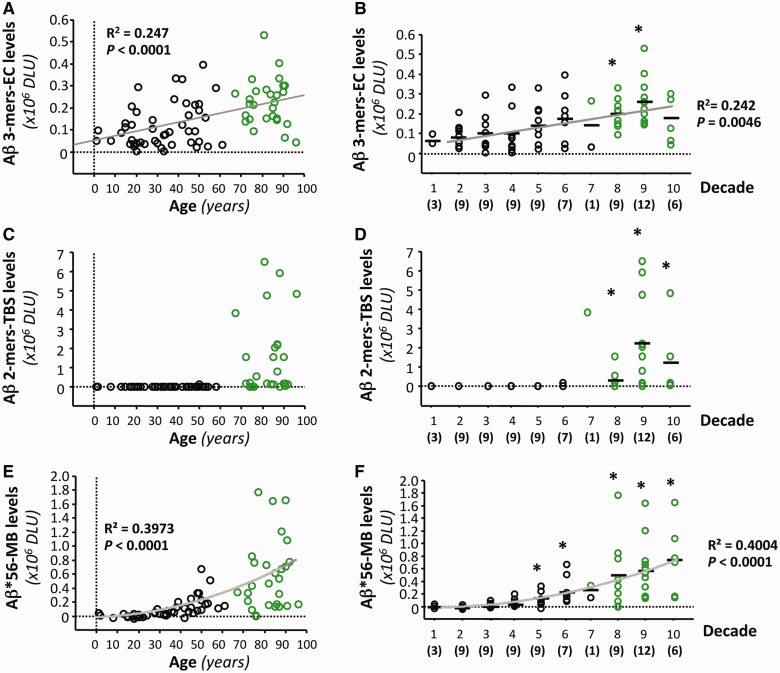Figure 2.
Specific amyloid-β oligomers in the brain rise at different ages in cognitively intact subjects. (A–F) Forty-nine brain specimens from the Brain and Tissue Bank for Developmental Disorders and 26 brain specimens from the Religious Orders Study Tissue Bank (shown in black and green, respectively) were analysed as one group (n = 75) to evaluate soluble amyloid-β dimers, amyloid-β trimers and Aβ*56 in cognitively intact subjects ranging from 1 to 96 years of age. The relationships between age and amyloid-β trimers in extracellular (EC)-enriched fractions (A and B), amyloid-β dimers in Tris-buffered saline (TBS) extracts (C and D) and Aβ*56 in membrane (MB)-enriched fractions (E and F) expressed as a function of age (A, C and E) or grouped by decade (B, D and F). Curves show the best fit quadratic regression functions. *P < 0.01, compared with individuals<20 years of age, using Kruskal-Wallis test followed by Mann-Whitney U test with Bonferroni corrections. DLU = densitometry light units.

